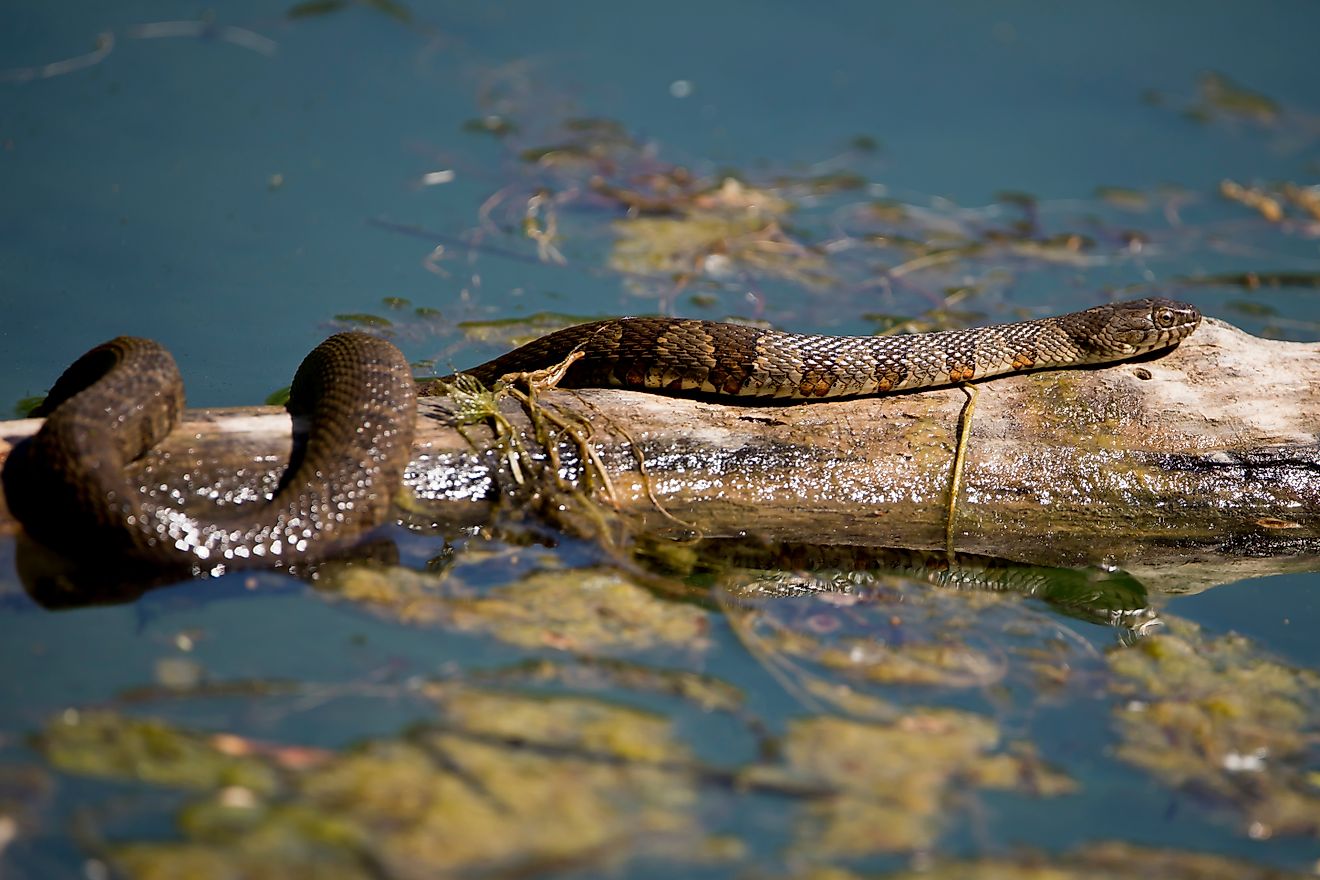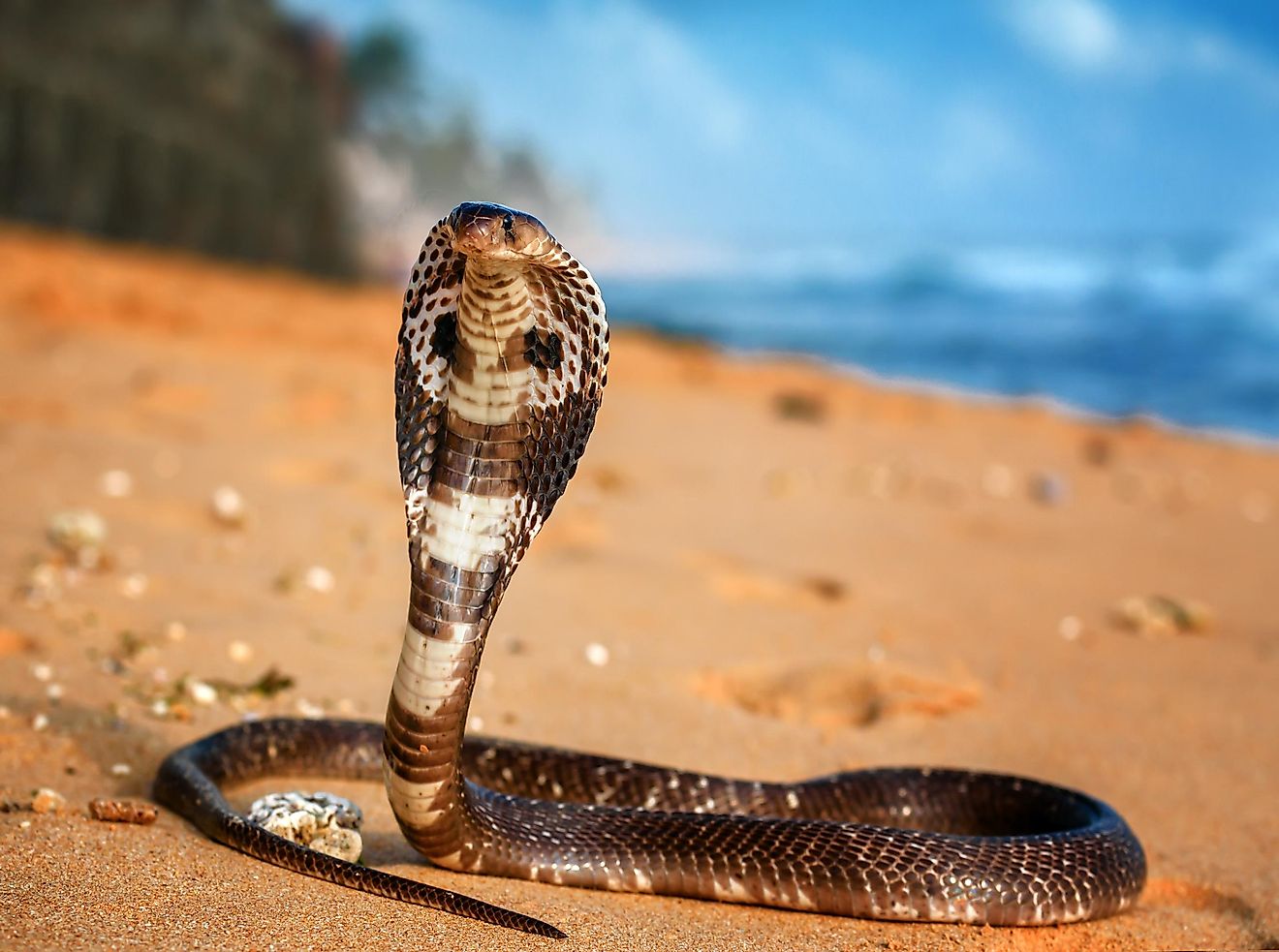
Animals that Live Only in Asia
Asia is the largest land continent on earth and the most populous. With such a large land mass, it is a place that a wide variety of animals call home. With various terrains and biomes beyond the presence of humans, a large collection of animals, from elephants to rhinos and more, can thrive and call it home. Asia’s diverse ecosystems showcase how animals can thrive in such a massive land area. This article will dive into ten animals that only live in Asia.
Binturong

Found in the dense forests of Southeast Asia, these nocturnal bearcat creatures with shaggy black fur, sharp claws, and sharp teeth are one of only two carnivores with a prehensile tail that is nearly as long as its body and thick at the root to aid when climbing through the treetops in which they spend most of their time. Underneath that lengthy tail is an oil gland that secretes a scent that smells like buttered popcorn; however, this scent is used to mark territory and attract mates. Sadly, they are at risk of becoming endangered from the destruction of their habitat and poaching.
Asian Elephant

Asian elephants are the largest mammals on the Asian continent, getting up to 12 feet tall. Males weigh up to around 6,000 kg, while females may weigh up to around 4,000 kg. They are smaller, both in weight and herd size, compared to their African cousins. They also only have one “finger” on their trunk for grasping things, unlike the African elephant, which has two. The Asian elephant can be found in isolated pockets of India and Southeast Asia; these social creatures are considered to be forest animals. However, they can be found in grasslands as well. Sadly, these gorgeous giants' are endangered in the wild as they are targets for poachers as well as habitat loss.
Red Panda

These mammals, which seem to resemble raccoons, are about the size of a large domestic cat, weighing between 3.6 and 7.7 kg; they are found in the forests of eastern Asia and the Himalayas. Red Pandas are famous for their acrobatic skills, as they spend about 90 percent of their time in the trees, using their lanky tails to help them keep their balance while climbing on the treetops. Having a thumb-like wrist bone aids them in getting a better grip while climbing. As adorable as these little guys are, they are endangered; they are hunted for their pelt and are targets for the illegal pet trade.
Sumatran Orangutan

Sumatran orangutans are one of three species of orangutans, the others being the Bornean orangutan and the recently confirmed and most endangered Tapanuli orangutan. All species are part of a group of highly intelligent primates. Humans also belong to this family; we share over 96% of our genes with orangutans. Orangutans are the largest arboreal mammals, spending most of their lives in the trees. They are also one of the most intelligent of all primates, learning how to use a variety of tools found in the forest to keep themselves dry and to extract insects from trees. The Sumatran, however, exhibit a thinner build and longer faces; possess longer, paler red hair; can weigh up to 113 kg as adult males; and are identified as dominant males by their cheek pads and throat sacs, which they use to produce roar-sounding calls for attracting females.
Indian Rhino

Also known as the ‘Greater One-Horned Rhinoceros’ due to only having a single black horn, which both the male and female possess, the Indian rhino is the largest of the three Asian rhinos and the second largest rhino after the white rhino. The Indian rhino stands at an astonishing two meters tall and can weigh between 1,800 and 2,700 kilograms. They have an amazing sense of smell and hearing, but their eyesight is poor. They once could be found in the entire northern part of the Indian subcontinent, but due to being hunted for sport or killed for being agricultural pests, they can now only be found in small populations in India and Nepal.
Komodo Dragon

With over 6,000 lizard species, the Komodo dragon is a very rare species, only being found on five islands in Indonesia when in the wild. However, it is the largest species of lizard, with the males growing up to 3 meters in length and weighing around 70 kilograms. With their massive size, they are carnivorous apex predators, eating large prey from water buffalo, pigs, and deer. They eat 80 percent of their body weight in one feeding. If their prey ends up escaping, it will either be found by the Komodo’s amazing sense of smell or perish from blood poisoning due to the 50 strains of bacteria in the Komodo’s saliva.
Asian giant hornets

Asian giant hornets are the largest wasp species in the world, and they are native to temperate regions in China, Korea, Japan, and India. They were found in the Pacific Northwest in late 2019 and again in 2020; however, since 2022, there have been zero sightings. They are ground dwellers, preferring to gravitate towards low forests and mountains and nest underground, usually in natural cavities like hollow trees or abandoned rodent burrows. The queen is four to five cm in length, while the male and female workers are a little less than four cm in length, and their stingers are 6 millimeters in length. They are not particularly aggressive unless provoked. Their sting is not lethal to humans, but it can be quite painful, particularly because they have the ability to sting more than once.
Japanese Macaque

The Japanese macaque is the northernmost non-living primate and can only be found in Japan, with a large population residing on the island of Yakushima. These macaques are also called “snow monkeys” because they have adapted to the cold and can thrive in temperatures as low as -15 degrees Celsius, with thick brown or grayish hair covering most of their bodies to keep them warm. The hot spring spot where they are known to “bathe” has become a popular tourist spot. Surprisingly, they do not use this spot to clean themselves like us humans would; they use it to gain warmth during the cold months.
Great Hornbill

The Great Hornbill is one of the larger hornbill species found across the Indian subcontinent and Southeast Asia. The male and female are similar to one another, except the irises of the female are bluish-white, while the males are red and have slightly larger bills and casques. The Great Hornbill's most defining trait besides their bright orange-yellow coloring is the aforementioned casque, which is atop the massive bill of both the male and female. However, it has no known purpose besides being theorized to be used in mate selection, as the males use it in aerial casque butting. However, this unique feature of the Great Hornbill is one of the reasons why it is in vulnerable status, as poachers hunt these beautiful birds for their casques, meat, and tail feathers to use as adornments in tribal cultures. Deforestation is also another threat these remarkable birds face in their attempt to thrive in the wild, as they prefer taller trees to nest in and will use the same spot every year.
Sambar

Sambars are a large species of deer living in southern Asia and the third largest deer in the world, weighing in at 550 kg and measuring up to over 2 meters long. Like most species of deer, the male Sambars grow long antlers that grow up to 110 cm long and have three points at the largest, and of course, they are used to fight other males during the rutting season for breeding rights. Unlike other species of deer, the Sambar does not form herds; the males have minimal contact with other Sambar deer, whereas the females will congregate in groups of 8 to 16. These elusive deer are currently being threatened by hunters for their fur, antlers, and meat, as well as habitat loss.
The continent of Asia provides a place for many extraordinary animal species to call home. From dense forests to grasslands, the biomes in Asia are beautiful and filled with life. From the intelligent Samaturan Orangutan to the Asian Giant Hornet, each of these animals pays homage to why Asian wildlife is the most diverse on Earth. This exploration into ten animals exclusive to Asia not only highlights the continent's rich biodiversity but also underscores the importance of conservation efforts to protect these irreplaceable creatures and their habitats.











